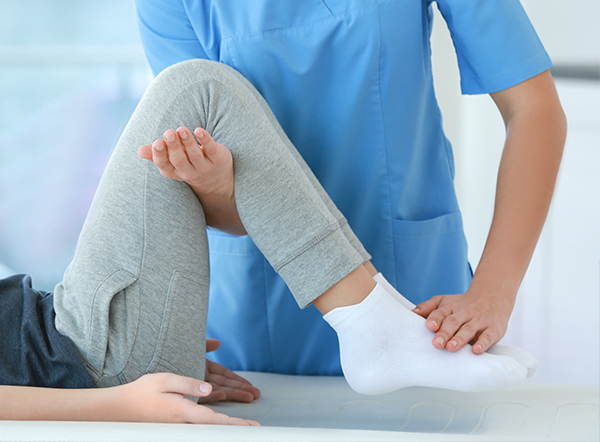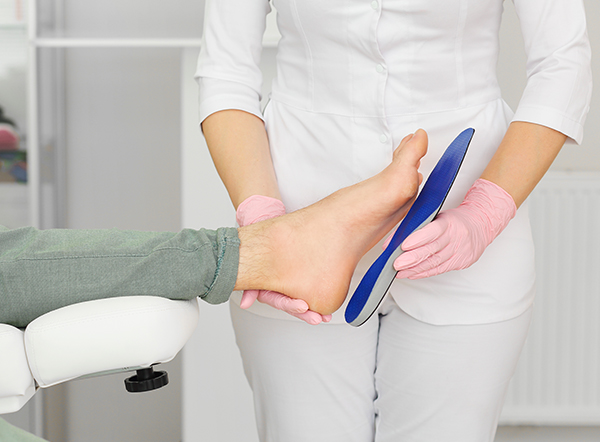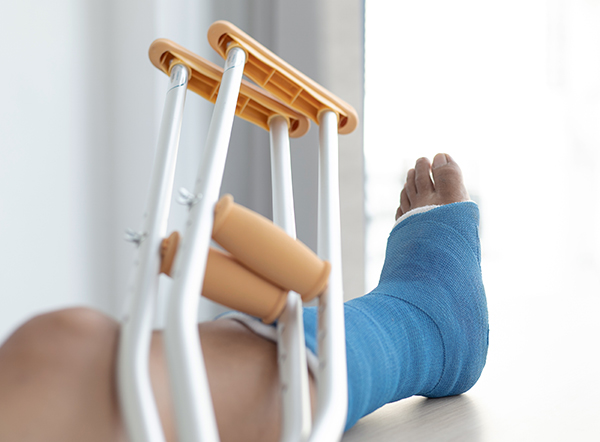Home / Treatments / Non-Surgical Treatments
Stretching and exercises, performed according to the advice of a medical professional, can help ease pain and improve range of motion. Physical therapy may be long-term and ongoing, or intermittent, such as rehabilitation after surgery.

Orthotics are special footwear that may be prescribed to ease pain, provide support to the limb, and either improve the deformity or prevent worsening of the condition. In case of certain foot problems – for example bunions or hammertoes – proper shoes that fit well, as well as padding around the toes, may be recommended.

Removable braces or non-removable casts may be prescribed and applied to ease pain, provide support to the limb, and either help reshape the limb or prevent worsening of the limb’s condition.

Off-loading is a technique of limiting or altering weight bearing – that is, ensuring that the patient isn’t “on their feet” or that the pressure of standing and moving is more evenly distributed, so that the deformity does not worsen. Off-loading can be achieved by certain kinds of braces, casts and special footwear, or simply by sitting or resting and elevating the affected limb.

To help manage the pain of a limb deformity, pain medication, such as acetaminophen or nonsteroidal anti-inflammatory drugs (NSAIDs, such as ibuprofen), may be prescribed. NSAIDs have the benefit of reducing inflammation, which can further ease pain and improve mobility in the affected limb.
In certain cases, where inflammation is a key component of a limb deformity, steroid medications – oral or injections – may be indicated.
In some circumstances, medications such as bisphosphonates and vitamin D may improve the quality of the bone, prevent fractures and decrease pain.
